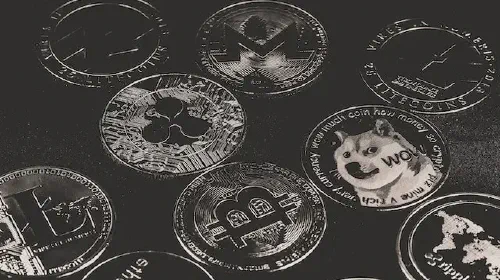Fantom vs. Avalanche: Understanding the Variances
Salomon Kisters
Jun 6, 2023This post may contain affiliate links. If you use these links to buy something we may earn a commission. Thanks!
Over the past few years, the cryptocurrency industry has seen the emergence of a large number of smart contracts-compatible blockchain protocols.
As a result, newcomers to the crypto space easily get confused, especially between projects like Fantom and Avalanche. These projects aim to solve the same issues and yet, use completely different mechanisms and have separate communities.
Fantom and Avalanche are both working on resolving the scalability and interoperability problems faced by many blockchains, without compromising on the security and speed of their platforms. However, the approaches both these protocols adopt differ considerably from each other.
This article will compare both these projects to highlight their differences.
What is Fantom?
Fantom is a smart contracts-enabled decentralized ledger platform that emphasizes scalability and development. Initially, the platform was built to power smart cities by assisting them in establishing their fintech and developing decentralized ecosystems. However, over the years, the project has shifted its focus to decentralized finance, supply chain tracking, healthcare, tokenized assets, and the development of CBDC (Central Bank Digital Currency).
The Fantom project started in early 2018 under the leadership of Ahn Byung Ik – a computer science Ph.D. and founder of several successful technology startups, including Point-I and Siksin Co. However, he didn’t stay with the project, and nowadays, Fantom is mostly associated with Andre Cronje – an entrepreneur and founder of Yearn Finance. Andre played a critical role in the development of Fantom’s decentralized ledger and acted as an advisor in the Fantom Foundation. But Andre also left the project in March 2022.
The mainnet for the Fantom network launched in the latter part of 2019, but most of its features weren’t live until late 2020. The on-chain governance process was implemented in the early part of 2021. It’s worth noting here that Fantom is among a few big cryptocurrency projects that have already completed their development phase.
Moreover, the project raised $37 million through three private sales in 2018 and has managed to attract hundreds of millions of dollars in its TVL. Fantom is partnered with several dozen enterprises and government agencies, including the governments of Afghanistan and Tajikistan.
What is Avalanche?
Avalanche is an open-sourced and decentralized blockchain platform designed specifically for the development of decentralized applications and to facilitate enterprise-level networks. The protocol focuses on handling large-scale finance with incredibly fast transaction finality and boosting interoperability within the blockchain space.
Avalanche was conceptualized for the first time in May 2018 by a pseudonymous team named Team Rocket. The fundamental information was shared on the InterPlanetary File System. The Avalanche project was founded by Emin Gun Sirer – a Turkish-American computer scientist and professor at Cornell University. The founding team also included two of his doctoral students, Maofan Ted and Kevin Sekniqi.
The Avalanche codebase for its consensus mechanism was released publically in March 2020, and the mainnet was launched later that year in September. Though much of the development is completed and anyone on the internet can access the Avalanche blockchain, the project is still technically under its development phase.
The development of Avalanche is primarily managed by two organizations: Ava Labs and the Avalanche Foundation. Ava Labs is a US-based software company that is responsible for developing and maintaining the technological framework for the Avalanche blockchain. The Avalanche Foundation is a Singapore-based non-profit organization that acts as the supervising body for the Avalanche project, overseeing and coordinating its development.
Avalanche gained early popularity in the crypto space within a few weeks of its launch. The project initially raised around $60 million through different initial coin offerings in 2019 and 2020. In the following years, it has managed to raise several hundred million dollars with different venture capitalists in the crypto space.
How Does Fantom Work?
Being a DAG (Directed Acyclic Graph), Fantom’s decentralized ledger functions a lot differently from traditional blockchain networks. Within the Fantom network, any computer node can process transactions by communicating information with other computer nodes near it, which then communicate the same information with more nodes in their proximity. The ledger uses specialized algorithms to avoid overlapping information. This way, a certain piece of information is quickly spread throughout the network.
Fantom uses a special Proof-of-Stake mechanism, named Lachesis. In this model, participants are required to lock in a minimum of 1 million FTM (about $350,000 in May 2023) tokens to become validators. However, the maximum stake allowed is capped at 15 million FTM. The network also allows users to form staking delegates, and anyone with just one FTM token in their web wallet can do so.
Fantom has a growing DeFi ecosystem which can be divided into two parts. The first is Fantom Finance, home to everything DeFi in the Fantom ecosystem. This part of the ecosystem hosts over a hundred digital assets, several decentralized protocols, and synthetic crypto tokens. The other part of the ecosystem is EVM-compatible and provides access to some of the biggest protocols on other blockchains, including SushiSwap, Curve, and Cream Finance.
How Does Avalanche Work?
Avalanche has a multi-chain infrastructure and uses its own consensus mechanism to ensure the validity and security of the system. The blockchain has combined the classic practical Byzantine Fault Tolerance (PBFT) and Nakamoto’s model of consensus algorithms to come up with a completely new mechanism that’s cheap, fast, secure, scalable, decentralized, and interoperable all at the same time.
Avalanche achieves this status through a unique voting mechanism called subsampled voting. In subsampled voting, several network participants volunteer to validate transactions on the blockchain. The network then randomly selects a certain number of participants among them. These validators then change the information back and forth, repeatedly voting on whether certain information is correct or not. The procedure continues until the required confidence is achieved.
Anyone can become an Avalanche validator by setting up a very basic computer rig and staking 2,000 AVAX tokens (about $29,800) on the blockchain. That’s why the project reached the 500 validators count within a week of launching. Currently, there are about 1,300 active Avalanche validators in the ecosystem. The infrastructure of the Avalanche ecosystem is dependent on the three main layers:
1. X Chain
X Chain (or Exchange Chain) is where all the digital token creation and management takes place. It is also used to carry out peer-to-peer transactions using different crypto tokens, including the platform’s native currency, i.e., AVAX.
2. C Chain
The second blockchain in the network, i.e., C Chain (or Contract Chain), is the smart contracts-compatible layer. The chain enables developers to build and run decentralized protocols using the Avalanche technology. Moreover, this chain is also EVM-compatible, allowing developers to move easily from the Ethereum ecosystem.
3. P Chain
P Chain (or Program Chain) is used for all governance and transaction validation purposes. It is where validator nodes interact with each other to authenticate and record transactions in the ecosystem.
Fantom Tokenomics
FTM is the native token of Fantom. It is used for governance, staking, network fees, and collateral for the ecosystem. Interestingly, FTM has ERC-20, BEP-2, and BEP-20 versions built on Ethereum, Binance Beacon Chain, and BNB Smart Chain, respectively. The total supply for FTM over all these ecosystems is capped at 3.175 billion tokens, which were all minted in 2019.
Out of the total supply:
- 37% of the tokens were sold in three rounds of private sales during the first half of 2019.
- 31% of the tokens were reserved for staking rewards.
- 15% of the tokens were allocated to advisors.
- 10% of the tokens were allocated to the team.
- 1.5% of the tokens were sold to retail investors through ICOs.
- 4% of the tokens were kept as reserves for the ecosystem.
As of May of 2023, the total number of FTM tokens in circulation is around 2,788,500,000, with a market capitalization of $1,051,749,859, making it the 44th largest cryptocurrency in the market.
Avalanche Tokenomics
As mentioned already, AVAX is the native token of the Avalanche ecosystem and is used for staking, paying transaction fees, and distributing rewards. The total supply of AVAX is capped at 720,000,000 tokens, with around 429,219,000 tokens already minted. However, out of the total tokens created, only 333,158,767 AVAX is currently in circulation. This is because, unlike Bitcoin, the Avalanche blockchain burns all the transaction fees to limit supply.
At the time of the initial launch, about 50% of the total 720 million AVAX was reserved for the staking rewards. About 15.97% was sold in various public and private sales over the years. 10% of the total supply was allocated to the founding team, whereas the Avalanche Foundation received 9.26%. 7% and 5% were allocated for Community & Developer Endowment and Strategic Partners, respectively. The remaining 2.5% was reserved for airdrops.
Two Projects with Diverse Capabilities
Overall, Fantom and Avalanche are well-established projects with strong fundamentals and significant institutional interest. Both ecosystems have diverse DeFi capabilities with cheap transaction fees and competitive transaction finality speed.
With EVM compatibility and various high-profile partnerships, both projects appear as incredibly attractive networks to developers and retail investors alike. These metrics imply a promising future for both ventures.
Stay informed with the latest insights in Crypto, Blockchain, and Cyber-Security! Subscribe to our newsletter now to receive exclusive updates, expert analyses, and current developments directly to your inbox. Don't miss the opportunity to expand your knowledge and stay up-to-date.
Love what you're reading? Subscribe for top stories in Crypto, Blockchain, and Cyber-Security. Stay informed with exclusive updates.
Please note that the Content may have been generated with the Help of AI. The editorial content of OriginStamp AG does not constitute a recommendation for investment or purchase advice. In principle, an investment can also lead to a total loss. Therefore, please seek advice before making an investment decision.

Avalanche: Open-Sourced Platform for Decentralized Applications and Enterprise Blockchain Protocols
Avalanche is an open-sourced platform for decentralized applications and enterprise blockchain protocols. It aims to solve the blockchain trilemma by combining different consensus mechanisms and a multi-chain structure.

Avalanche vs. Solana: A Comparison of Two Emerging Blockchains
Avalanche and Solana are both emerging blockchains with unique features. Avalanche offers compatibility with Ethereum and lower fees, while Solana boasts faster transactions and cheaper costs.

Polygon vs Algorand: Understanding the Differences for Informed Crypto Investments
Learn about the variances between Polygon (MATIC) and Algorand (ALGO) to make informed decisions when investing in cryptocurrencies.
Protect your documents
Your gateway to unforgeable data. Imprint the authenticity of your information with our blockchain timestamp